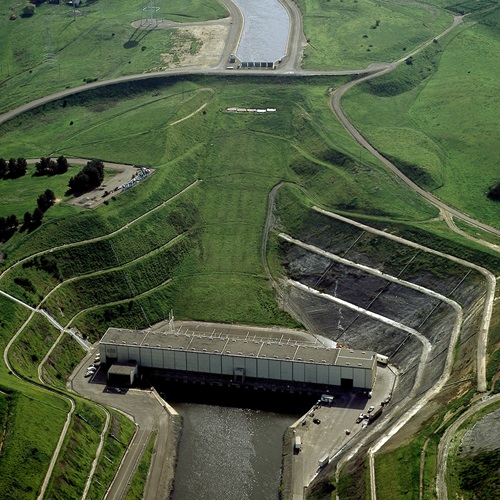By DAVE HURLEY
SACRAMENTO – While Bay/Delta species continue to decline, leading to the 2023 closure of the ocean and river commercial and recreational salmon season along with emergency regulation changes for white sturgeon, the Delta Conveyance Project, aka ‘The Tunnel’ was approved by Governor Gavin Newsom’s administration when the project’s Notice of Determination was published on December 21. This came after the lead agency, the Department of Water Resources (DWR), released the Final Environmental Impact (EIR) report on December 8, leaving only 30 days for the public to file litigation against the project and its EIR under the California Environmental Quality Act (CEQA).
While timeline is short, it is further hampered by occurring over the holiday. However, there are several additional hurdles for the project to advance including state and federal permits as well as the National Environmental Policies Act (NEPA).
Something must be done as climate change is anticipated to diminish California’s water supply by 10% by 2040 according to the recent press release by the DWR. Losing an additional ten percent of available water at a time when salmon seasons are closed, white sturgeon are petitioned for ‘threatened status,’ and no Delta smelt have been found in surveys for the past six years would seem to be the final blow for Bay/Delta fish and wildlife. According to the DWR press release, the single tunnel would be 36 feet in diameter and 18 inches thick, running from the north Delta near the community of Hood through two new intakes to connect with Bethany Reservoir at the start of the California Aqueduct, thereby bypassing flushing action in the San Joaquin River section of the Delta. The single tunnel has a capacity of 3000 with a total capacity of 6000 cfs, claiming to deliver an additional 228,000 acre-feet during the atmospheric rivers of January 2023.
Although the project is touted as a savior for California’s water infrastructure and supply, fishery and environmental organizations along with tribes strongly oppose the project as the final gasp for salmon and other fish species in addition to burdening domestic water users with unmanageable costs. The question remains – How much water is necessary to maintain viable fish and wildlife species in the California Delta? Organizations are questioning moving forward with an expensive project, costing a minimum of $16 billion, when a Bay-Delta Plan has yet to be completed. It seems premature to move forward with a project costing a minimum of that doesn’t have the ability to create more water, just reroute existing supplies which are anticipated to diminish further in the future.
The words delivered ten years ago by the late Bill Jennings of the California Sport Fishing Protection Alliance are particularly prescient today. An excerpt from his December 2013 speech regarding the then Bay Delta Conservation Plan (https://www.youtube.com/watch?v=JuqU_cx7E3c) is as follows, “They proposed to build the tunnels now and decide how to operate ‘em later. That’s not restoration. That’s a death sentence for one of the world’s greatest estuaries. Well, you won’t find any ideas or answers as to how much water the Delta needs, how much water will be exported. Nor will you find responses to the federal agencies and independent scientists who have scathingly criticized the draft versions as the scheme as biased, flawed, unsupported, and highly speculative. That it will lead to species extinction. The State Water Board’s observations that the tunnels will provide less water than presently exported if adequate fishery protection levels are established. Independent economists have ridiculed the economic assessment and pointed out the huge financial risks. It will saddle the public with vast debt, undermine regional water self-sufficiency, and the water will simply be too expensive for farmers unless heavily subsidized by urban taxpayers. We will not allow our fisheries, farms, communities, and future prosperity to be sacrificed to enrich South Valley industrial agriculture that compromises 3/10th of 1% of the state’s economy and is predicated on embezzled water, massive public subsidies, unrestricted pollution, and subsistence wages. We’ll fight this abominable scheme through the administrative halls, the court rooms, and the ballot box if necessary. If necessary, we’ll fight over channels and sloughs and on the television, through the field to the very gates of hell. We will not surrender this Delta.” The handwriting has been on the wall for decades, but time will tell who is listening.




